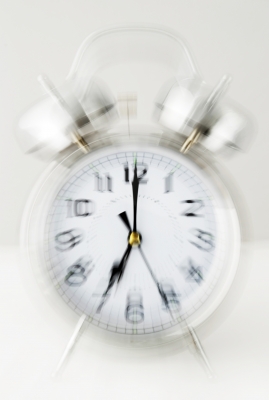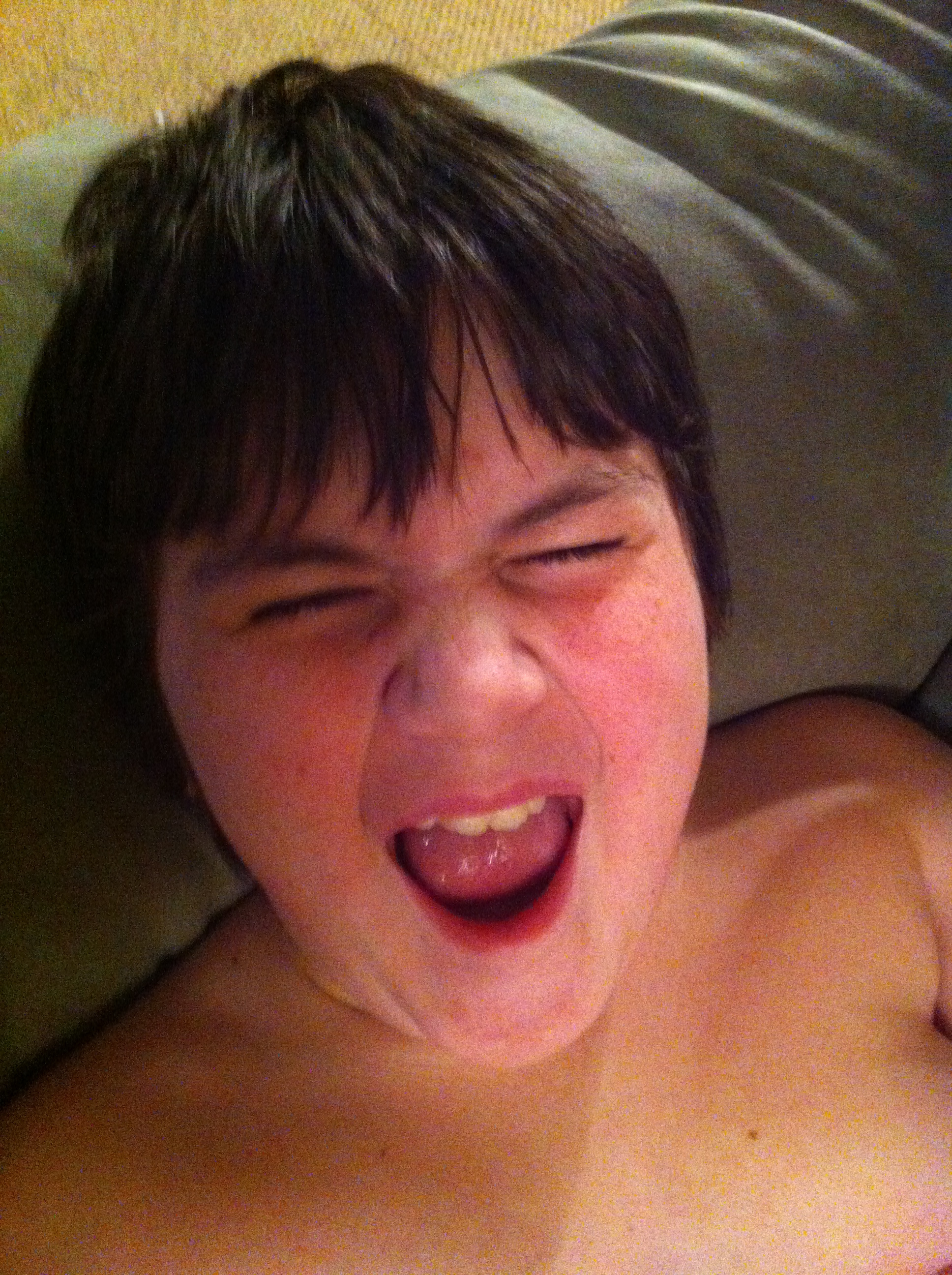 Some of you may have seen my recent “controversial” question I posted about a startling conversation I had with my son. I asked anyone who felt comfortable to share with me your thoughts and experiences surrounding the topic and I received an overwhelming response! Thank you to every single person who chose to chime in via Twitter, Facebook, or email. I am grateful for your unique perspectives and I’d like to share some of them here.
Some of you may have seen my recent “controversial” question I posted about a startling conversation I had with my son. I asked anyone who felt comfortable to share with me your thoughts and experiences surrounding the topic and I received an overwhelming response! Thank you to every single person who chose to chime in via Twitter, Facebook, or email. I am grateful for your unique perspectives and I’d like to share some of them here.
Here’s the original short post again:
I recently had an extensive evaluation done for my son with a cutting edge, holistic achievement center. The program offered is intense and lengthy but convinced me that my son would be able to reverse most of his balance/coordination/motor skills issues, digestive issues, academic imbalances and sensory challenges.
I asked my son later if this program sounded fun and exciting to him, and if he would like to start. He immediately blurted out, “You hate my Autism. You want my Autism to go away.”
Wow. Not what I expected from my 10 year-old. But I hear him loud and clear.
I am not trying to change who he is at all. I want only the best for him, and felt it my parental duty to merely CONSIDER whether or not a program that can help him open up to his abilities without much of the struggle would be in his best interest. If it worked, of course.
What do you think? I’m not looking for anyone to tell me what I should do, what I want to hear from you is how you feel about your OWN situation.
Would relieving some of the struggles = changing who your child is or who you are in your opinion? Does it mean you don’t accept them, or are you empowering them with new tools?
Is trying to help your Autistic child DENYING who he/she is?
With all of your permission, I’ve chosen some of the key points of some of your responses that I wanted to share.
Robert said:
“I think it’s a tough balance. When people ask me if I want to be ‘cured,’ I have to admit I have a hard time not taking offense. To me, it’s like asking me if I want to be cured of my skin color, Autism being so definitive a part of my identity as a whole person.
Still, are there things with which I know I need help? Of course, but I don’t want that help to come at a cost of who I am. I also don’t want those interventions to define so much of the time in my life that I feel I’m not allowed to be myself.”
You can find more about Robert at simplyrobert.wordpress.com where he occasionally blogs about Autism, but more often about his Autistic interests. (I think it’s a great resource! Love the post on productivity!)
Another Autistic adult reminded me that an important aspect to consider is where the Autistic person might be coming from. My eyes were opened to some really great points that I absolutely had to share with you:
“We live in a world that is not only ‘not made for people like us,’ but openly hostile to our differences. We are told, ‘Stop rocking! Stop flapping! Stop talking to yourself!’ without any consideration of what purpose these activities serve.
When we are bullied or mistreated, WE are the ones sent to ‘social skills training’ so we can ‘learn how to fit in’, as if it’s our fault for being so different. But I want to illustrate the general environment we face, and my point is that it can cause us to see ANY attempt to help as yet another way of squelching the person inside.
There are also people who feel that their Autistic traits are very much part of who they are, and taking them away would also be taking away a piece of themselves, even if that ‘piece’ causes a lot of apparent heartache.”
This reader does various therapies for her children but is careful not to frame them as “helping with Autism,” rather something they do to help them succeed in life (much like going to school or learning their ABCs).
Brilliantly put.
One of my favorite social media friends and fellow bloggers shared:
“Where does my Autism end and where do I begin? This nasty little quandary works just as well when reversed as well. I say your son is brilliant because he’s too young to be so self-aware. I’m both impressed and saddened that he’s already dealing with this one. He needs more time to mature before tackling such heady stuff.
I confess. I’ve struggled with this one myself. If offered a cure for my own issues, I don’t think I’d take it. I’m not sure how much of me would go with the ‘bad stuff’. I like some of the stuff that I KNOW a cure would take away.
He has to come to terms with the fact that Autism doesn’t define him.”
That is a fine line that I think must be explored at a pace that is comfortable for each individual.
My close friend in the Fire Rescue Reserve that assists me when I teach my Autism CERT module sent me a heartfelt testimonial after seeing my post:
“For me, through my early teen years after I was diagnosed, I constantly tried to dismiss the fact I had Autism, I felt ashamed, scared, and angry with the fact. At that time in the world little was known to the general public and many doctors about Autism. This in turn made it harder for me to accept. My parents tried many things and none really worked in the end. I had been diagnosed so many times and been to so many doctors I was starting to shut the world out and just didn’t want to accept the fact that I had Autism.
Later on in my late teens and early twenties I found that support group that I had been missing. This group consisted of both friends my age and their families near me. Through the experiences we shared I grew little by little and eventually learned how to deal with my Autism in my own way. These experiences have molded me into who I am today. Today I am finishing my criminal Justice degree. I also am a volunteer with a large metro area fire department which has provided a further opportunity to expand my support group. Through volunteering here I now assist with teaching of the community emergency response team class. This in turn has helped me practice being around people and learning social cues and understanding my Autism. In a big way volunteering has helped reduce the pangs that come with having Autism.”
I always hear great gems of wisdom when I invite his perspective into my teachings.
A wonderful parent told me:
“When my son was diagnosed with PDD, initially, as his Mom and as a clinical social worker, I wanted to get him all the help and services I possibly could! I had heard how early intervention was SO important and he was only diagnosed at age 6. So, I made sure we got an IEP, got him into a friendship group at school and a social skills group privately. I also got him OT to help with the sensory integration issues. I have to admit, although this was helpful in the beginning, this packed our schedule and we all felt extremely overbooked and stressed!
…my perspective began to change. I started placing him in supportive activities that he enjoys and feels help him. We continued the social skills group, but let the OT go (after a year of treatment), and instead, he joined a non-competitive swim team. The swim team allows my son to feel included in a sport, he may never win a race, but that doesn’t matter, to me what matters is that he feels like one of the other boys, included! I have since looked for other ways he can “fit in” with other kids, instead of looking for services specific to his diagnosis.
…we have accepted that our son will be different, it’s who he is and I really don’t want to change that, but, like you I want the best for him and don’t want to see him struggle too much. The older he gets, he’ll be nine this summer, the more I have been letting go and allowing him to learn more for himself about what is helpful to him. I have begun trusting in his ability to know what is best for him, as I don’t have the same issues he has.”
What a great reminder. At 10, I forget that he is aware of what serves him. Not to mention that the children coming forth today really are so much more connected to their inner “GPS” of what they want and need than we ever were!
Another social media friend I admire wrote:
“Tough question. Complex answer. I understand your desire to ‘normalize’ your son as much as is possible. There are things you describe that have real effect on us and our ability to live happy and fulfilling lives. This much cannot be denied.
On the other hand, we are what we are. While my Autism has handed me some wonderful abilities, it has also granted me vast lacuna in other abilities.
Still. . . Autism is not something added to a normal person. Autism is not something removed from a normal person. Autism is a large set of differences between one group of persons and everyone else.
Autism is identity which runs deeper than a name. Autism is what I am, it is the base upon which I build me.
…here is the key: the real indicator here, the only valid indicator, is your son’s voicing of his opinion.
Thank you for that reinforced point. He would not have expressed an opinion if he didn’t feel it strongly!
Another mom shared:
“A parent’s job is to help our children flourish, to become the best that they can be! I totally get that. I too try my best to help my son in anyway I can, without extremes…
As far as helping him with his balance/coordination/motor skills, in the long run, that is definitely going to benefit him. He will be able to take part in more ways when it comes to playing, maybe get picked to play with other kids, so I can see where that would help him.
If it were my son, I would let him have a say in the decision. Ask him why he does or doesn’t want to participate, get his point of view, and take it into consideration. Since it is about him, and it is his Autism.”
WOW! What amazing responses!
All this being said, we chose not to participate in that program. I also chose to check my perspective and make sure that I am in complete acceptance and appreciation for who both my children are when I engage with them. At all times. It has made a difference.
Am I giving up on finding additional tools and resources for him? No. After all I am always looking for tools, supports and resources for my daughter AND myself! It’s a journey. As Abraham-Hicks says, “You never get there. You’re never done.” What I DID give up was the urgency that something must be done to “help.” The inner panic that somehow I am not doing all I can for him.
As soon as I made this shift, this wonderful organization showed up in my inbox. That’s a pretty big wink from The Universe, eh?
Christmas waves a magic wand over this world, and behold, everything is softer and more beautiful. ~Norman Vincent Peale
![]()















